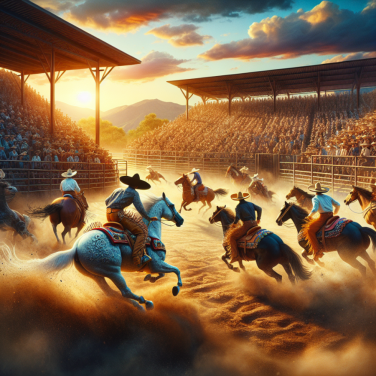The Ripple Effect: How Boxing Shapes Society and Culture
Boxing as a sport has been in existence for centuries dating back to ancient civilizations such as Egypt, Rome, and Greece. This sport's numerous evolutions have influenced and shaped societies culturally as it continues to morph into various dimensions of professional sports worldwide. Over the years, boxing has been a powerful catalyst for societal transformation and has influenced culture in ways that have left a permanent mark. This impact can be seen in various spheres of life including entertainment, socio-economic factors, as well as public and mental health.
Entertainment has undergone tremendous changes with boxing at the forefront. Hollywood has been instrumental in promoting boxing through popular movies like "Rocky", "Raging Bull", and "Million Dollar Baby", showcasing not only boxing as a sport but also highlighting the struggles, triumphs, and aspirations of the boxers. These movies, through an engaging narrative, inspire individuals to rise above their challanges, instilling values such as discipline, grit and resilience.
Boxing's societal influence is evident through its socio-economic impact. The sport has historically granted opportunities to individuals from disadvantaged backgrounds, giving them a chance to alter their socio-economic status. This is evident from the stories of world-renowned boxers such as Manny Pacquiao and Floyd Mayweather, who rose from poverty to earn vast fortunes from their boxing careers. Furthermore, mega boxing events generate massive revenues and provide employment opportunities in areas such as event management, hospitality, and advertising.
Concerning public and mental health aspects, boxing provides channels for anger management and discipline. It boosts self-esteem, and for some, acts as an escape from drug and gang-related activities. Moreover, the sport builds mental resilience as boxers routinely face adversity both in the rin and in training.
In terms of the cultural aspect, boxing's influence over fashion is beyond denial. Brands like Everlast, Ringside, and Title Boxing are a testament to how boxing has infiltrated mainstream fashion. Hip hop culture in particular embraces boxing fashion, featuring boxing robes, boots, and gloves in music videos and other promotional materials.
Additionally, boxing has shaped societal norms and perceptions. It has brought nations together, promoting patriotism and unity. Famous fights have galvanized societies, giving them a sense of representation and boosting national pride. For instance, when Muhammad Ali triumphed over George Foreman in the "Rumble in the Jungle", it was seen as a victory for Africa and the entire black community, breaking racial and cultural barriers.
Read also:
Exploring the Golfers' Paradise: A Comprehensive Guide to the Number of Golf Courses in The Villages
Tracing the Roots: An Overview of Boxing's Historic Journey
Boxing has a rich and varied history, likely dating back to ancient civilizations. It emerged in its early form in the likes of the Middle East, Egypt, and Greece, where there’s clear evidence of organized, competitive fist fighting.
Archaeological evidence from the ancient civilizations indicates a sport or challenge similar to boxing. The earliest depictions of boxing were found in Sumer, dating around 3rd millennium BC, and later in ancient Egypt around 1350 BC. In ancient Greece, boxing was a well-developed sport and enjoyed consistent popularity from the 8th century BC onward.
The Romans adopted boxing from the Greeks, adding their unique elements such as leather straps for protection and the gruesome feature of metal studs. However, during the fall of the Roman Empire, boxing largely disappeared from the public narrative for many centuries.
Boxing resurfaced, albeit intermittently, during the Middle Ages in different forms across Europe. It was not until the 18th century, in England, that boxing began to be recognized as a professional sport. During this time, Jack Broughton, known as the 'Father of Boxing,' introduced a set of boxing rules to prevent unnecessary death and injury. These rules formed the basis of modern boxing and legitimized it as a recognized sport.
The 19th-century saw the transition from bare-knuckle boxing to gloved boxing, defined by the implementation of the Marquess of Queensberry rules. These rules established the size of the boxing ring, the number and length of the rounds, the use of gloves, and other key facets that continue to govern the sport today.
Boxing crossed the Atlantic, reaching the shores of America in the late 19th century. In America, boxing evolved further - with the establishment of federations, weight classes, and major championship matches that attracted worldwide attention.
The 20th century brought global recognition for boxing. Legendary figures such as Jack Johnson, Joe Louis, Rocky Marciano, Muhammad Ali, and Mike Tyson turned boxing into a popular spectator sport.
The sport has also been influential off the ring. Boxing has inspired numerous movies, books, and artworks, and has played a key role in discussions about race, class, and American identity. It was instrumental in breaking down racial barriers, with multiple fighters of diverse backgrounds achieving global fame.
Women, too, had to fight for their place in boxing.




